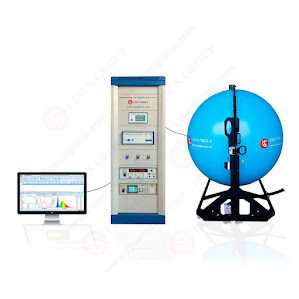LISUN Ulbricht sphere for photometric, colorimetric and electrical measurement of LED lamp
.jpg)
A device that is used for photometric , colorimetric, and electrical measurements of LED bulbs is referred to as an Ulbricht sphere. An integrating sphere is another name for an Ulbricht sphere. Photometric measurements: An Ulbricht sphere is used in the process of measuring the total luminous flux of an LED lamp. This is accomplished by catching the light generated by the LED and dispersing it uniformly throughout the interior surface of the sphere. After that, a photometer is used in order to determine the overall output of light at the entrance of the sphere, which is afterwards transformed into a value of luminous flux (expressed in lumens). Measurements in colorimetry : The Ulbricht sphere is also suitable for determining the color rendering index (CRI) of an LED light source. A light source's Color Rendering Index (CRI) is a measurement of how well it can reproduce the colors of different objects. Because of the sphere's contribution to the more uniform distribution...
.jpg)